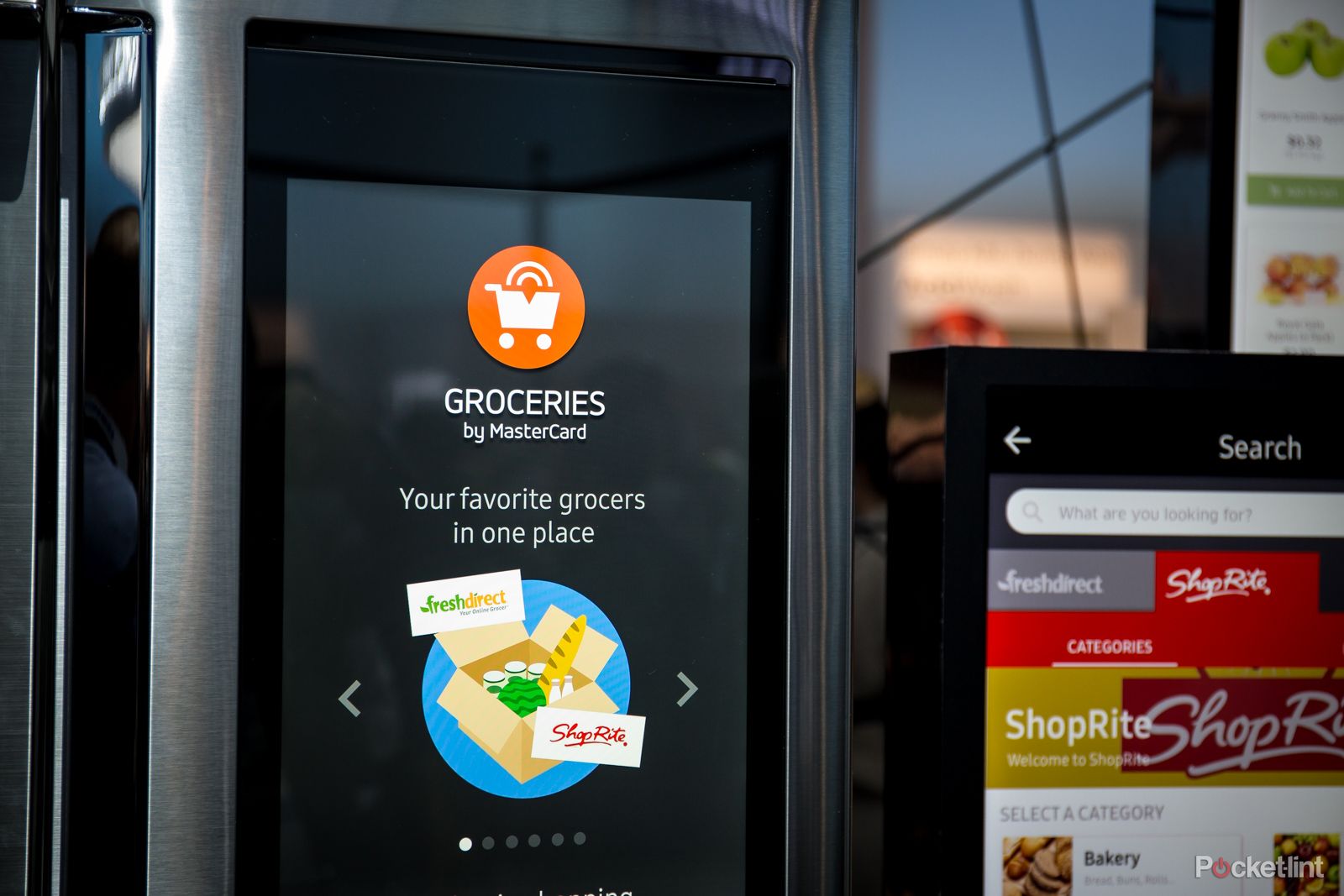Technology has the power to do many things, and changing the world is one of them.
We’re privileged to be living in a time where science and technology can assist us, make our lives easier and rethink the ways we go about our daily lives.
The technology we’re already exposed to and accustomed to has paved the way for us to innovate further, and this list of current and future technologies certainly have the potential to change our lives even more.
Here’s our list of technologies that will probably change our lives forever over the coming decade and beyond.
1 Space Tourism
Blue Origin
We can fly to virtually any country in the world without any trouble, but what if we could all one day see the Earth from space?
Companies such as Virgin Galactic, SpaceX and even Amazon’s Blue Origin, want to make it a reality one day, and give us a (very expensive) seat aboard a spaceship to take us into orbit. Passengers on Amazon’s New Shepard space shuttle will be taken 100km above sea level, before parachuting back to Earth.
2 Human-like robots
Clone Robotics
A Polish company called Clone has been working on a life-like robotic hand which aims to have similar characteristics to a real human hand including the same size, shape, muscles and skeletal makeup.
The Clone Hand is an impressive bit of kit that offers 27 degrees of freedom through the use of a mix of synthetic bones, ligaments and muscles.
The company says that 16 artificial intelligence companies have already ordered the hand and more are expected to follow.
Clone is also working on a full Torso and with the rise in AI at the moment, it wouldn’t be too much to imagine a world where we’ll eventually have AI-powered machines with human-like structures.
3 The colonisation of other planets
Wikipedia
We’ve been wreaking havoc on Earth for a long time and the planet can only put up with mankind’s destructive nature for so long.
If we don’t destroy it, we’ll one day outgrow it. Plans are in the works to colonise other planets and Mars will no doubt be the first port of call.
With leaps forward in technology, this vision of the future is quickly becoming science-fact, rather than science-fiction.
4 Robots in space and in the workplace
Pexels
NASA is already sending robots of different shapes and sizes into space. As technology progresses, this makes sense. Robots don’t need to worry about oxygen to breathe or food to eat and they can be packed full of sensors to send data back to Earth.
The same applies in the workplace. Robots can take on the more difficult, dangerous and dull jobs to save mankind the trouble and risk. They can also theoretically operate more quickly, efficiently and with fewer mistakes too.
5 Electric/self-driving cars
Tesla
Electric cars are nothing new; they’ve been on our roads for some time now and they’re only getting better.
Car batteries are lasting longer, the charging station infrastructure is growing and self-driving technology is being heavily invested in meaning it’s coming sooner than you probably think.
Tesla already has a complex Autopilot mode that can take over some driving controls, but one day car manufacturers hope to let us go completely hands-free.
6 Flying cars
Moller
When there’s no space left on the roads, it’s not unreasonable to think we might take to the skies. There are already plenty of interesting flying car designs that show this future is a realistic possibility.
Perhaps if it’s not flying cars, we might all have other forms of personal transport – jetpacks, for example, have been a popular pursuit of inventors and thrill-seekers for decades.
7 Robot butlers
pal-robotics.com
Chores, chores, chores. Boring and unfortunately necessary. But what if robots could help save you the misery? We already have the beginnings with robot vacuum cleaners and smart home appliances. Larger, more useful robots are springing up too.
We could easily be living in a future packed full of useful robots helping around the home as butlers, chefs or general dogsbodies.
8 Roads over rivers
Wired
Space is finite and running out quickly – especially in crowded urban spaces.
This concept shows a future where roads and living spaces have moved out over the waters. When self-driving vehicles do all the work and are fast enough, journeys across the oceans this way might not be unrealistic either.
9 Solar panel technology
Pocket-lint
Solar panels are another technology that has been around for a while, but their future potential is huge.
Not only can they now be hidden in the tiles on the roof of your house thanks to Tesla Solar Roof tiles, but some companies are developing ways of integrating them into car roofs, where they will be able to power in-car tech or make the battery last longer.
10 Hyper-fast trains
Hyperloop
Another Elon Musk-backed company, Hyperloop is a high-speed underground transport system currently being built and tested in America. The first route planned will go from Los Angeles to San Francisco. Another route is planning to go from New York to Washington D.C. in 29 minutes rather than the 2 hours 56 minutes it takes at the moment.
Hyper-fast trains that go underground and underwater could revolutionise not just public transport, but international travel too. Imagine being able to speed from one country to another in the same time it currently takes to travel between towns.
11 Working in VR
Unicornhunt
Augmented Reality, or AR, has some incredible potential. It’s been around for a while now, in the form of various apps that can overlay information around you and is different from VR because it overlays information rather than simply putting you in a virtual reality.
Companies are experimenting with using both augmented reality and virtual reality devices in the workplace. They can be used in a variety of ways including visual representations of blueprints, virtual scale models of products in development or for simple things like virtual team meetings.
12 Gesture-based computing
DreamWorks Pictures/20th Century Fox
It might have been popularised by Minority Report, but the concept of gesture-based computing has been around for a while. It’s also already appearing in multiple different technologies and is almost second nature for most anyway.
How many gestures do we already use on a day-to-day basis on our smartphones, tablets and other smart devices? It’s reasonable to see a future where we’re no longer restricted by mouse and keyboard and instead rely on voice and action to manipulate data in a virtual space.
13 Wearable screens
Cicret
We might be currently daydreaming of foldable phones and screens, but the future might well be screenless.
There are plenty of touch-capable projector-like devices that can beam usable screens onto your skin, clothing or other surfaces. The future of smartphone tech might not even require a device in your pocket but something you wear or have implanted.
14 Driverless lorries
Volvo
Self-driving cars are one thing, but the Transports Research Laboratory (TRL) wants driverless lorries on UK roads in the very near future.
The idea is for up to three lorries to drive in convoy, with the lead vehicle controlling the acceleration and braking of the two vehicles behind it. The “slave” lorries, while still having a “driver” to steer them, would be able to drive much closer together, compared to humans driving, and therefore reduce fuel costs and emissions.
We’ll soon live in a future where our deliveries and cargo are transported by computer-powered transport. More efficient and always on time.
15 3D printed food
3ders
We’re not quite in a world where Star Trek replicators exist and we can magic up anything we want out of thin air. But 3D printing technology is coming along quickly and companies are already experimenting with printing food.
Fridge running a bit low? Not a problem for future you, just print some cakes, vegetables or even a pizza. We’re dreaming big here.
3D printing is taking off in other areas too. From creating aeroplane and vehicle parts, to replacement joints such as hips, or pieces for a board game, it still has huge potential to change our lives in the coming years. The materials being used to print are evolving too, and now include graphene that is “lighter than air” but 10 times stronger than steel.
16 Fridges that order for you
Pocket-lint
If 3D-printed food seems unrealistic, how about a refrigerator that senses when you’re running low on something and orders it for you? This tech already exists and is getting better and better every year.
Eventually, it’ll be so common every home will have one and you’ll never need to pop out to the supermarket again.
17 Smart toothbrushes that send data to your dentist
Colgate
We already have intelligent toothbrushes which keep an eye on your brushing technique to make sure you’re doing a good thorough job each time you brush.
But what if your toothbrush could send that data to your dentist so they don’t even need to ask if you’re flossing daily? Or, perhaps less terrifyingly, using sensors to monitor your dental health by scanning for cavities or plaque build-up.
18 Smart mirrors that check your health
Kohler
A quick glance in the mirror each morning gives you a visual cue on how you’re feeling and looking to the outside world.
Now imagine a future where smart mirrors could scan you and tell you about potential health problems, vitamin deficiencies or warning signs of underlying issues. Pre-emptive information about these symptoms might help you prepare.
19 A toilet that analyses your deposits
Ideaing
Smart toilets aren’t a new idea. The Japanese are renowned for having incredible toilets with posterior warming seats, built-in bidets and much more besides. The toilet of the future might go a step further by analysing your leavings to check for illness.
Imagine how effective such a device could be at helping people catch signs of bowel cancer early on before it becomes a significant problem. It could also alert you to dietary issues or deficiencies that need rectifying to improve your health.
20 Exoskeleton
NBC News
Robotic exoskeletons are already being used by the military to give soldiers extra strength and abilities, making their job easier, but they could also help disabled people, especially those who are unable to walk or use their arms to get about easily.
Prosthetic and robotic limbs are already a reality and are proving invaluable, but to have a whole robotic body would provide a whole new level of freedom for many around the world.
























